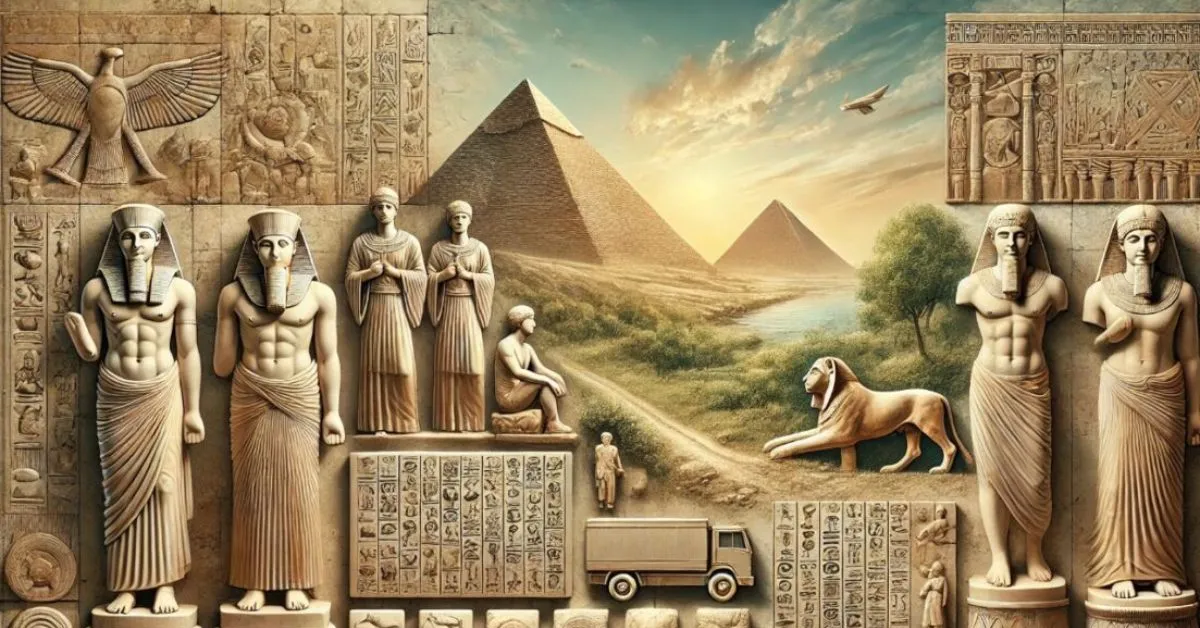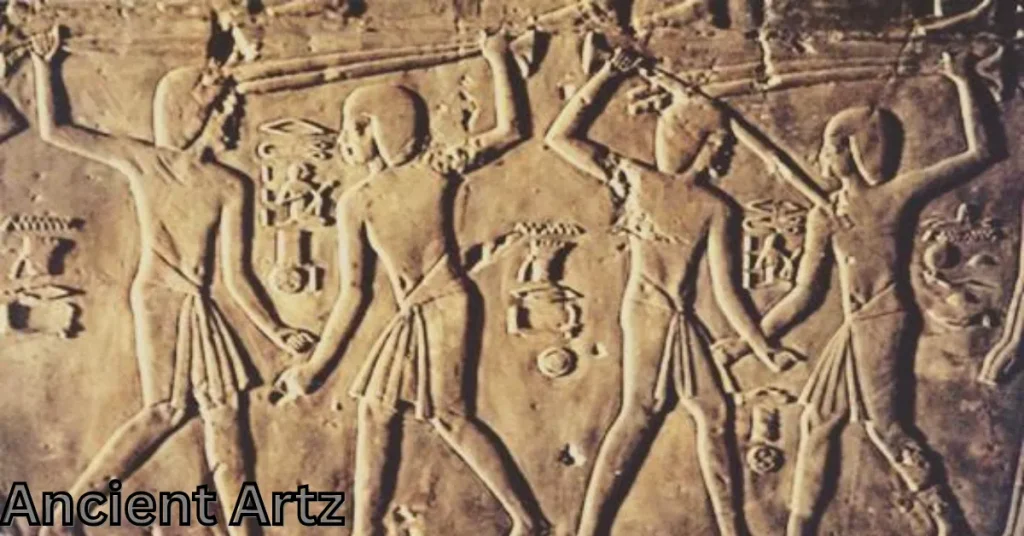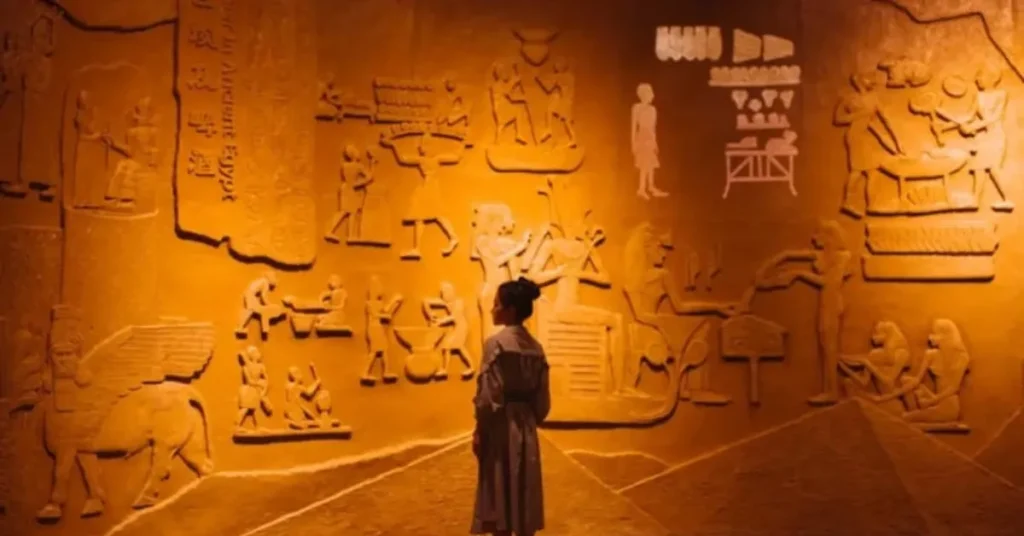Ancient Artz: A Journey Through Timeless Masterpieces and Their Enduring Legacy

Ancient art is a captivating exploration into the origins of creativity and symbolism, tracing back tens of thousands of years. This form of artistic expression isn’t merely about aesthetics; it encapsulates the beliefs, rituals, and values of civilizations like Ancient Greece, Rome, Egypt, and beyond. The artistic heritage of these cultures serves as a testament to their intricate social fabrics, where art played a profound role in daily life, religious observance, and political expression.
The term “Ancient Artz” encompasses more than just artifacts; it reflects the birth of human ingenuity and the preservation of civilization’s earliest stories. From vibrant classical artworks and monumental architecture to intricate sculptures, ancient art styles continue to inspire modern artists, scholars, and art enthusiasts worldwide. This journey through art history delves deep into the heart of humanity, exploring how ancient civilizations harnessed artistic power to leave a timeless legacy.
The Origins of Art: Prehistoric Beginnings (c. 40,000–10,000 BCE)
Art’s roots can be traced to the prehistoric era, with the emergence of cave paintings and carved figurines as evidence of early human creativity. These initial expressions, discovered in caves across Europe and Asia, reveal intricate depictions of animals and abstract symbols. The cultural significance of art in these times lay in its ability to communicate with the natural world, possibly for ritualistic or survival-related purposes.
You May Also Like: BabesProduct.com – Your Trusted Source for Trendy, Affordable Baby Gear and More – The Whispers
Over time, the sophistication of prehistoric art grew, with iconic sculptures and rock carvings becoming common. This era’s art demonstrates a powerful connection between humanity and nature, as well as early instances of monumental architecture. Prehistoric beginnings marked the inception of what would evolve into complex artistic heritage across civilizations, showcasing humanity’s undying fascination with storytelling through visual means.
Ancient Egyptian Art (c. 3100 BCE–30 BCE)

Ancient Egyptian art is renowned for its monumental sculptures, intricate hieroglyphics, and awe-inspiring architecture like the Pyramids of Giza. Egyptian artists focused on precision and symmetry, with a strong emphasis on continuity and symbolism in their work. Much of their art was religious, portraying gods, pharaohs, and scenes of the afterlife, reflecting Egypt’s profound beliefs about immortality and divinity.
This period contributed significantly to art history, with timeless pieces that illustrate daily life, power, and divinity. Egyptian art was also deeply ritualistic, ensuring that the deceased’s soul would be guided through the afterlife. The preservation of Egyptian art today not only provides insight into ancient life but also influences art restoration techniques that keep these historic masterpieces alive for future generations.
Mesopotamian Art: Civilization’s Dawn (c. 3500–539 BCE)
Mesopotamia, home to the Sumerians, is often hailed as the cradle of civilization. Mesopotamian art is marked by its use of symbolism, grandiose sculptures, and complex relief carvings, especially in ziggurats and palaces. This art reflects the earliest forms of urbanized society, highlighting themes of political power and divine favor.
The intricate carvings and iconic sculptures from this era depict the daily life, mythology, and rulers of these ancient cities. Mesopotamian artistic legacy showcases a rich blend of architectural innovation and symbolic representation, influencing later civilizations like Ancient Greece and Rome. This early artistry not only captured history but also established artistic standards for future empires.
Classical Greek Art (c. 900–31 BCE)
Classical Greek art is celebrated for its pursuit of idealized beauty and balance. Greek artists introduced new techniques in sculpture, architecture, and pottery that would shape the development of Western art. The Parthenon, one of the most iconic monuments of Greek architecture, is a prime example of their sophisticated design principles, combining monumental architecture with precise geometry.
Greek art focused on human anatomy, creating statues with lifelike detail and expression. This era’s masterpieces, influenced by classical art styles, were instrumental in advancing humanism in art, emphasizing the potential of mankind. Greek contributions to art, including works by influential artists like Phidias and Polykleitos, laid the foundation for subsequent artistic movements and have inspired countless generations.
Roman Art (c. 509 BCE–476 CE)
Roman art was heavily influenced by Greek culture, yet it brought its unique focus on realism and grandeur. Romans excelled in monumental architecture, producing iconic structures like the Colosseum and the Pantheon. Romanesque art, deeply tied to political and social power, extended from sculptures and murals to vast public monuments honoring emperors and gods.
You May Also Like: WNFLB Explained: Building a Balanced Future Through Leadership and Learning – The Whispers
With an emphasis on historical art periods that celebrated realism, Roman artists captured the likenesses of their subjects with precision, portraying both their virtues and flaws. Roman art represents a confluence of Greek ideals and Roman engineering, creating an artistic heritage that left a lasting imprint on Western civilization.
Ancient Chinese Art (c. 1500 BCE–200 CE)
Ancient Chinese art, spanning multiple dynasties, emphasized harmony with nature and the cosmos. The early Shang and Zhou dynasties developed intricate bronze work, while later periods introduced landscape painting and pottery. Artifacts from this era reveal a refined aesthetic sensibility, with careful attention to balance, symbolism, and spiritual themes.
Chinese art focused on both human and supernatural elements, showcasing a deep reverence for nature and the ancestors. This artistic tradition, particularly calligraphy and ink painting, significantly influenced East Asian art. Ancient Chinese art’s distinctive style has a lasting legacy, evident in the traditional art forms preserved and celebrated to this day.
Ancient Indian Art (c. 1500 BCE–500 CE)

Ancient Indian art flourished alongside the spread of Hinduism, Buddhism, and Jainism. This era is renowned for its intricate sculptures, temple architecture, and symbolic iconography. Indian art was marked by its depiction of gods, epics, and mythological tales, contributing a rich narrative tradition that permeated daily and religious life.
The craftsmanship of this period, particularly in temples and sculptures, is emblematic of India’s cultural diversity and spiritual beliefs. Artistic heritage in India has preserved ancient techniques and narratives, offering insight into the religious and cultural practices that continue to influence Indian art today.
Mesoamerican Art (c. 2000 BCE–1500 CE)
Mesoamerican civilizations like the Maya and Aztecs developed unique art forms characterized by monumental sculptures, intricate pottery, and vibrant murals. Their art is known for its symbolic connection to the gods and nature, often depicting mythical scenes and cosmology in a style that was both elaborate and meaningful.
Mesoamerican art was integral to rituals and daily life, celebrating gods and natural forces essential to their worldview. The preservation of Mesoamerican art allows for a greater understanding of these ancient civilizations, showcasing their ingenuity and complex relationship with the natural world.
African Ancient Art (c. 500 BCE–1500 CE)
African ancient art, particularly from the Nok and Ife cultures, reveals sophisticated metalwork, sculpture, and ceremonial artifacts. African artists excelled in bronze and terracotta sculpture, producing works that portrayed realistic human features and powerful symbolism.
You May Also Like: Kelly Rowland Net Worth: The Journey of a Grammy-Winning Star – The Whispers
This period’s art captures a distinct cultural significance, reflecting African societies’ values, spiritual beliefs, and community structures. African ancient art continues to influence contemporary art, and its preservation contributes to a rich global art history narrative, emphasizing Africa’s role in the evolution of artistic expression.
Key Art Techniques in Ancient Artz
Ancient artists utilized groundbreaking techniques in sculpture, fresco painting, and monumental architecture. They perfected the art of stone carving, as seen in iconic sculptures from Ancient Greece and Rome. In Egypt, artists developed wall painting methods using mineral-based pigments, which have remarkably stood the test of time.
These techniques reflect a commitment to durability and aesthetic precision, ensuring that the stories, beliefs, and people they depict would endure. Ancient methods have informed art preservation efforts today, helping to maintain these timeless masterpieces for future generations to appreciate and study.
The Influence and Legacy of Ancient Artz
The influence of ancient art spans continents and millennia, shaping the course of art history and inspiring generations. From Renaissance art that revisited Greek ideals to modern art influenced by African and Mesoamerican styles, ancient art’s legacy endures in every brushstroke and sculpted detail.
Art’s cultural significance extends beyond its aesthetic appeal; it’s a bridge to understanding humanity’s shared past. The preservation of ancient art enables a connection to ancient civilizations, inviting audiences to marvel at and learn from the wisdom encapsulated in these timeless pieces.
Conclusion
The legacy of ancient art is a testament to humanity’s enduring quest for beauty, meaning, and connection. These timeless pieces serve as a mirror reflecting society’s evolution, aspirations, and values. As we appreciate and preserve these works, we ensure that the artistic heritage of our ancestors remains alive, inspiring future generations to create, explore, and celebrate our shared artistic journey.
FAQs About Ancient Artz
What defines Ancient Artz?
Ancient artz encompasses the earliest creative expressions of human civilization, including sculptures, architecture, and paintings, often symbolizing religious or cultural beliefs.
How did ancient artz influence modern art forms?
Ancient artz laid the foundation for artistic techniques and themes seen in later movements, such as realism, symbolism, and harmony, deeply influencing the Renaissance and other art periods.
What are some famous ancient art pieces?
Iconic pieces include the Egyptian Pyramids, Greek sculptures like the Venus de Milo, and architectural marvels like Rome’s Colosseum.
Why is the preservation of ancient art important?
Preserving ancient art helps maintain a tangible link to historical knowledge, cultural identity, and artistic heritage, enriching modern understanding of human history.
What techniques did ancient artists use?
Ancient artists used innovative methods in sculpture, pigment mixing, and architecture to achieve lasting durability and aesthetic appeal in their work.
How do different cultures view ancient artz?
Many cultures view ancient art as sacred, embodying heritage and ancestral knowledge, while others appreciate it for its universal aesthetic and historical value.
Who were some influential artists in ancient artz?
Influential figures include Michelangelo (Italy), Polykleitos (Greece), and various unnamed Egyptian artisans who contributed significantly to their respective cultures.
What is the significance of symbolism in ancient art?
Symbolism in ancient art served as a means to convey complex religious, political, or social messages, often reflecting the beliefs and values of a civilization.
